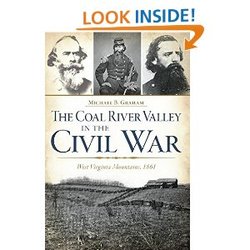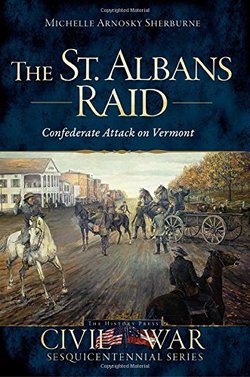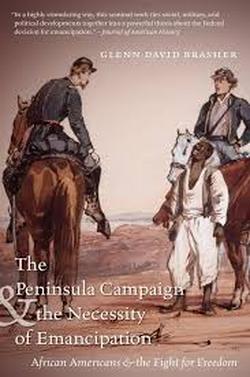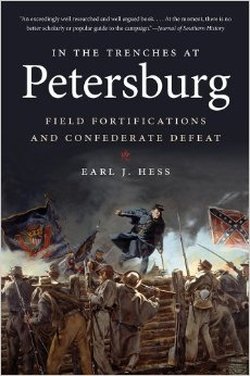
Michael B. Graham Ph.D
The History Press, 2014, 208 pp., $19.99
ISBN: 978-1-62619-660-5
Image courtesy of amazon.com
The stories of the border states throughout the American Civil War is often one of tragedy due to family separations greater than many other states. In this story of the Coal River Valley in the Civil War, Michael Graham states that a work on West Virginia in the Civil War would be too great to handle in one volume and focuses just on the Coal River Valley. In his work, he presents many points about the valley including the demographics, the industry and the military at the onset of the war including the major battles which occurred. While some of the battles may have been small, they were quite effective to the causes of the war on both sides.
Michael B. Graham, Ph.D, is an adjunct professor of history, security and global studies at the American Military University. He is also the senior Vice President for management and is the Chief Financial Officer at the United States Institute of Peace in Washington D.C. A graduate from the Air War College and an attendee of the Naval War College along with Marine Corps Command and General Staff College, he is the author of many other works. Some of those works include Liberating a Continent: The European Theater and Fall of the Rising Sun: The Pacific Theater. He has written many other books all on the subject of military history.
Much like Maryland, the people of West Virginia were greatly divided among their loyalties, some to the Union and some to the Confederacy. When the time came for them to secede from Virginia in 1863, the state pushed for admittance to the Union. But the events which occurred in 1861 were quite important to the causes of the war and in this work, Graham writes a flowing narrative which is easy to follow and gives the reader a better idea of what was going on in the West Virginian Mountains in 1861. Opening his work with a prelude, he gives a coherent outline about what was to come throughout the work starting with the Boone Court House. Graham’s account of the Boone Court House is quite in depth and well researched to the point that there is no question as to what happened on those fields. Some of the other conflicts which happened during the first year of the war in the mountains were the Coal River, Pond Fork, Bald Knob, Forks of Coal, Kanawha Gap and Raleigh to name a few. Throughout these accounts, the research is impeccable and well done supplemented with excellent pictures and maps.
I highly recommend this book to anyone interested in the history of West Virginia during the American Civil War. In his introduction, Graham states that he wanted to write a book about the state during the war and I hope that one day he does fulfill that idea. As for right now, this work stands as a tribute to a campaign of battles which are rarely talked about but have a great deal to do with the causes of both sides during the first pivotal year of the war. The story of the Border States is often overlooked, but here, Graham gives us a look into what really happened there. Highly recommended.



 RSS Feed
RSS Feed
